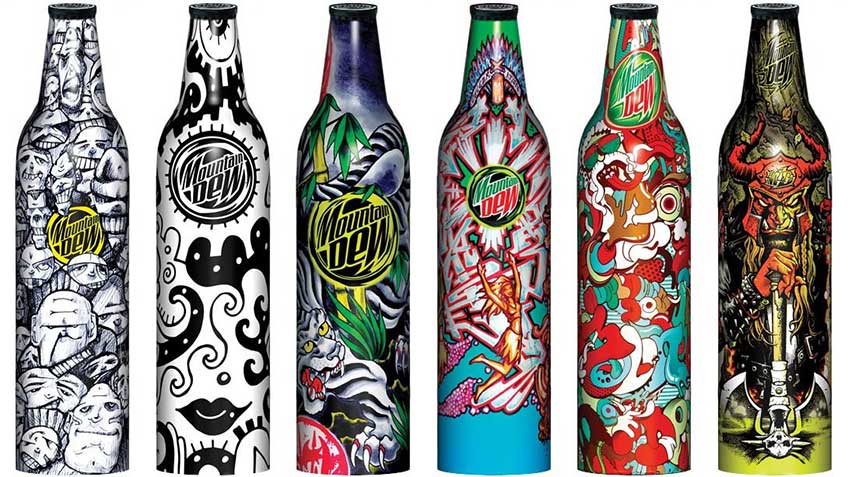Plastic, a useful and cheap material once seen as the solution to every packaging problem, is choking the planet. Although most plastic is recyclable, only about 9 percent of it is actually recycled. This means billions of tonnes of plastic end up as trash.
Globally we have reached a maximum capacity for our recycling plants, and poor recycling practices make recycling more difficult. China, citing contamination, no longer purchases plastic recyclables from other countries. To put this in perspective, the United States had previously diverted at least one third of their plastic recyclables to China. At home, inconsistent practices send confusing messages to consumers, who may end up throwing an item in the garbage due to uncertainty.
No longer able to ignore the issue, governments are beginning to take action. First up to the plate is the EU, poised to ban many single-use plastics within a few years. As the issue continues to plague the planet, replacing single-use plastics with biodegradable or reusable options is becoming increasingly important.
For consumer packaged goods brands, sustainability is a top concern, and it’s clear that simply making a package recyclable is no longer good enough. Single-use plastics, such as drinking bottles, plastic straws and takeout containers, are among the worst culprits because of their abundance, chemical composition, and because recycling plastic is more complex and less successful than recycling materials such as glass and tin. As brands begin to explore packaging alternatives, both old and new materials are emerging. What will be the big winner in the race to replace single-use plastics? Here are some front runners:
Available Now
- Reusable Containers: In certain contexts, using refillable containers is a viable option. In the grocery category, containers that can be re-used for bulk dry goods are seeing a resurgence. Coffee chains like Starbucks offer a routine 10 percent discount for customers who bring their own cup – but improvements need to be made to increase usage.
- Glass: This abundantly available material is one of the greener solutions currently available, given that most communities have glass recycling facilities and it is non-toxic. The most prohibitive factor for brands is cost, but that may change if governments begin to enforce higher taxes on plastics in an effort to reduce their attractiveness.
- Paper: In recent years manufacturers have improved paper products to extend further for foodservice brands, offering wide arrays of take-out and hot beverage containers that are fully biodegradable – and many are compostable. Dried goods can use better practices by using only natural dyes for color paper cartons, reducing their toxicity.
- Aluminum: Cans don’t exactly ooze sophistication, but innovation around drinking containers has elevated the lowly tin can substantially. Aluminum is considered to be the most ecologically friendly material that could replace single-use plastics: it is the material most often recycled by consumers, can be recycled numerous times without material degradation (which is what happens to plastic and paper cartons), and is the easiest to recycle.
- Wood Pulp Cellophane: This compostable, highly bio-degradable plastic can be used to replace light food wraps such as plastic bags or stiff plastic wraps.
- Sugarcane and Fiber Foam: Replacing styrofoam clamshell containers with biodegradable sugarcane options is a good alternative, but costs are still prohibitive for many brands.

Limited Availability Now
- PLA Polyesters: Bio-waste from corn is a top ingredient in these already available plastic alternatives that are bio-degradable and can be used in a variety of contexts, including bottles. It looks and feels like regular plastic – however there are some downsides that need to be worked out. In order to break down quickly, PLAs have to be processed in an industrial composting facility, of which there are comparatively few in North America. Otherwise, they will take just as long to degrade as regular plastics. On the upside, they do not leech toxic chemicals into the soil once they do break down.
- Liquid Wood: Another bio-polymer, liquid wood is made from a by-product from paper mills to create a strong, non-toxic plastic substitute. It can be recycled in facilities that recycle wood, but is also biodegradable, and some are compostable. Although used primarily for goods such as toys or furniture that require durability, there are some uses for liquid wood in packaging contexts, for example with higher end cosmetics.
In Research
- Chicken-feather Keratin-based Plastic: Project Karma 2020 is exploring how to turn the 3.1 million tons of chicken feathers disposed of in the EU every year into keratin based plastic. We do know that plastics made from chicken feathers are stronger than other plant or starch-based plastics. What’s still being worked out is a method to sanitize and process the feathers in an efficient and sustainable way.
- Bio-erodable Plastics: Rather than replacing single-use plastic, additives called pro-degradant concentrates (PDCs) are being developed to break plastic down quickly. Similar to PLAs, PDCs do pose some issues when it comes to recycling plants, and some countries are even considering banning them because of the potential harm to existing facilities. Pending this consideration, the jury is out on whether or not PDCs will provide a long term solution.
Brands looking for a quick replacement for single-use plastics can switch to aluminum or glass for cold drinks, and to non-waxy paper carton substitutes for take-out food containers. Looking ahead to a long-term solution, bio-plastics are coming – but it’s still unclear if they will be better than the current green options. Brands are wise to introduce non-plastic single-use containers now, because consumer awareness and concern is on the rise. Given the choice, non-plastic options are becoming a key purchase driver.

